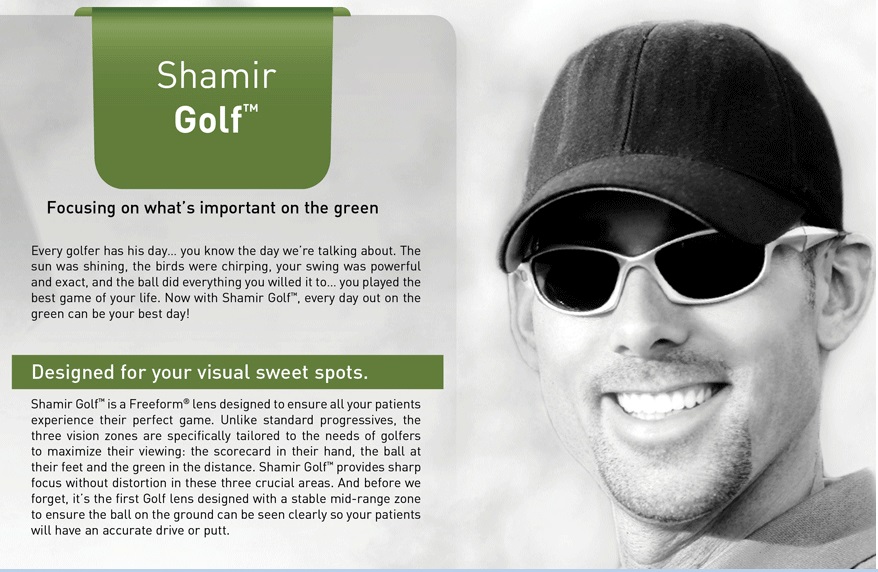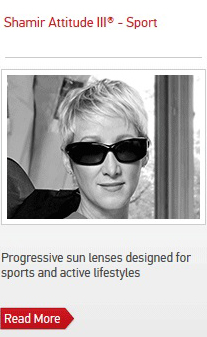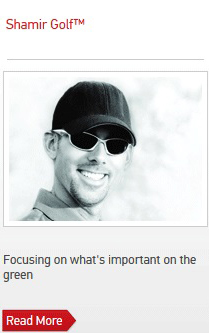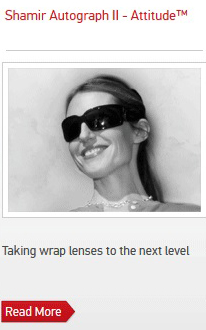Sponsored Content
Director of Market Research
Review of Optometric Business
May 24, 2017
Upgrading the eyewear sales mix offers the highest potential return of any practice improvement initiative that most independent ECPs can undertake.
This is true because eyewear is the dominant revenue source in nearly all practices, usually accounting for more than 40 percent of gross revenue. Eyewear is purchased by 80 percent, or more, of patients, so the opportunities for upgrade are broadly based.
In most practices, the eyewear sales mix has not been optimized, and there is substantial revenue growth upside.
There is a very wide range in the average eyewear sale among independents. This cannot be explained by differences in patient demographics across practices. According to data from the Management & Business Academy, the 10 percent of practices with the highest average eyewear sale realize revenue per pair 70 percent higher than the median practice, while practices in the bottom 20 percent realize an average eyewear sale 35 percent below the median. Thus, the vast majority of practices have an opportunity to significantly increase their average eyewear sale.
Beyond the immediate financial benefits of improving the sales mix, providing patients with superior eyewear solutions can improve acuity and comfort, which increases patient satisfaction and loyalty. A practice which offers high performance technology enhances its reputation among patients, and often reduces the purchase interval between eyewear purchases.
Sports Eyewear Opportunity
One of the largest second-pair sales opportunities that independent ECPs have is eyewear customized to the vision needs of sports enthusiasts. This is true for three reasons:
• Nearly half of the adult population participates in some outdoor sporting activity.
• Different sports have unique vision requirements that are not optimized with normal ophthalmic lens designs.
• Competitive sportsmen will readily invest in equipment and eyewear that have potential to enhance performance. Many are highly motivated prospects.
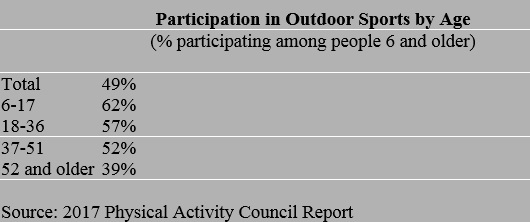
There are dozens of sporting activities, each with specific eyewear needs that are not well satisfied by eyeglasses designed for everyday use. For some outdoor sporting activities (hiking, fishing, etc.), glare reduction, or safety, not enhancing visual acuity, may be the primary unmet needs. For such sports, prescription sunwear may be the ideal solution. For sports in which visual acuity is critical (golf, target shooting, archery), lens design and tint are critical variables.
The table below shows the outdoor sporting activities with the largest number of participants. The fact that no single sport accounts for a high proportion of enthusiasts makes it necessary for eyecare professionals to learn about the vision needs related to all of the activities, some of which may be unfamiliar. This will allow recommendations to be tailored to each patient.
Males account for most outdoor sports participants and are the primary market for sports eyewear.
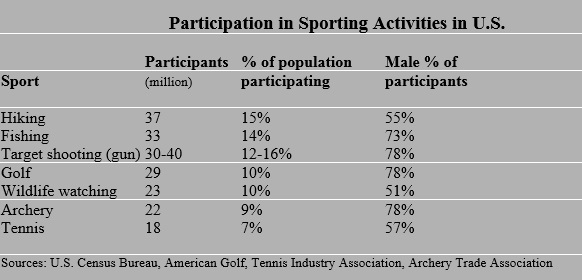
Golfers are a particularly attractive target for sports lenses. Vision has a big impact on golfing performance. A typical golfer is an affluent, middle-aged male with substantial discretionary income. The average golfer invests more than $1,500 annually in equipment and supplies. This spending is triggered by a desire to gain a small advantage in competition with fellow golfers. Taking a stroke or two off the handicap is worth a lot to many golfers. This desire can be leveraged to sell golf eyewear.
Steps to Increase Sports Eyewear Sales
Determine sports participation of each patient with the medical history/lifestyle questionnaire.
Each patient should be asked about the sports in which they participate. This not only identifies those patients with potential interest in sports eyewear, but also provides a topic for small talk with a patient that will demonstrate the personal interest the office has in a patient’s life.
Display sports eyewear signage, demonstrators and display racks.
Many patients are not aware that there is eyewear customized for use in sporting activities. Manufacturers provide posters, counter-cards, demonstrators and racks that can assist ECPs in merchandising sports eyewear. Sunwear options for sportsmen can be displayed in the dispensary to trigger interest. Knowledge of the sporting interests of the patient base can guide which materials to display.
Educate doctor and staff about options available.
The specific vision tasks involved in different sports must be understood before effective eyewear recommendations can be made. There are many variables involved in designing eyewear for sports enthusiasts, including: lens material and index of refraction, lens design, frame shape and material, frame branding, lens polarization and tint. The specific requirements to optimize vision for individual sports may not be obvious to eyecare professionals who do not participate in the sports. Major optical publishers archive articles about sports eyewear which can provide detailed advice on what works best for different sportsmen. It is useful to summarize this information in written outlines to educate staff.
Explain sports eyewear benefits in exam room.
Following a recommendation about eyewear for everyday use, based on what a patient indicates in the medical history/lifestyle questionnaire, the doctor should ask a conversation-starter question about a patient’s sports participation. This will elicit information about the degree of involvement of the patient in the sporting activity. Based on what is said, the doctor can mention how custom eyewear tailored to a specific sport can improve performance, relating how specific features improve aspects of visual acuity or comfort. When a patient indicates further interest, the doctor can make a specific recommendation on lens and frame type and share this information with the optician at hand-off.
Present sports lens options in dispensary.
After the specifications of a patient’s primary eyeglasses have been finalized, the optician can explain the details of the doctor’s sports eyewear recommendation and assist a patient in making an appropriate frames choice. Many offices and eyewear labs provide a discount on second-pair sales, which can be presented as an incentive to complete the purchase on exam day.
Identify sporting activities of patients in practice software system.
Recording this information in electronic records will facilitate marketing communications to targeted groups of sportsmen when new products designed specifically for them are introduced.
Find the Perfect Lens for Each Patient’s Sport with Help from Shamir
Click on the photos below to learn more about the many sports- and activity-specific lenses available for your patients from Shamir.
 Thomas F. Steiner, Director of Market Research for ROB, has spent more than 25 years helping eyecare practices succeed, including pioneering the introduction of color contact lenses into optometry. To contact him: tom.steiner@cibavision.com
Thomas F. Steiner, Director of Market Research for ROB, has spent more than 25 years helping eyecare practices succeed, including pioneering the introduction of color contact lenses into optometry. To contact him: tom.steiner@cibavision.com

